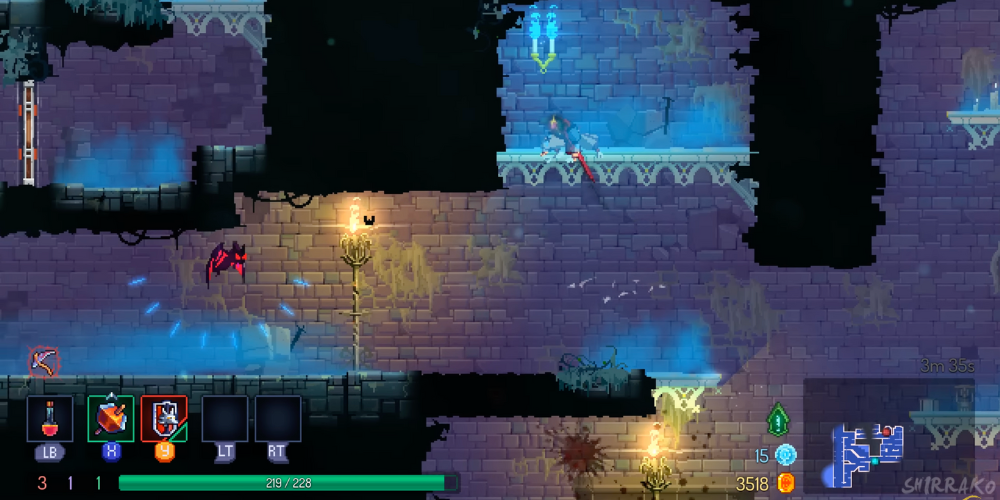Dead Cells: Return to Castlevania - Merging Old School with New Tricks

In the ever-evolving landscape of video games, where innovation and nostalgic homage often walk hand in hand, few titles have managed to blend the old with the new as seamlessly as Dead Cells: Return to Castlevania. This game stands as a testament to what is possible when developers deeply respect their roots while steering the genre into unexplored territories. Combining the challenging, exploration-heavy aspects of classic action platformers with the roguelike elements of procedural generation and permanent defeat, it offers a refreshing yet familiar experience that appeals to both long-time fans and newcomers alike. This article delves deep into how Dead Cells: Return to Castlevania merges the age-old allure of dungeon crawling with the innovative mechanics of modern game design, forging its own distinct identity in the process. The Legacy of Castlevania The Castlevania series, with its inception in the mid-1980s, carved a unique niche within the gaming world. Renowned for its gothic horror settings, challenging gameplay, and rich lore revolving around the eternal struggle against Dracula, this franchise has left an indelible mark on the action-platformer genre. Castlevania games, particularly the seminal Castlevania: Symphony of the Night, is often cited as the blueprint for what would come to be known as Metroidvania – a subgenre characterized by intricate maps to explore, a diverse array of enemies to conquer, and a plethora of upgrades to unlock. Dead Cells’ Roguelike Evolution Dead Cells took the gaming world by storm with its introduction, melding the Metroidvania style of explorative action with roguelike mechanics such as procedural level generation and character progression through death. This novel amalgamation not only offered an unforgiving challenge but also ensured that no two playthroughs were ever the same, keeping the gameplay fresh and engaging. The game was hailed for its fluid combat, expansive world-building, and the ingenious way it encouraged players to experiment with different strategies. Return to Castlevania: A Tribute and Innovation Dead Cells: Return to Castlevania is more than a mere homage; it is an evolution. By integrating characters, settings, and weapons iconic to the Castlevania franchise into the Dead Cells universe, the developers have crafted a crossover that feels both familiar and entirely new. This game not only pays respect to its origins but actively builds upon them, introducing novel gameplay elements and challenges that push the boundaries of what a retro-inspired game can be. Reimagined Settings and Characters Fans of the Castlevania series will immediately recognize the sprawling castles and intricate dungeons that make up the game’s world. In Dead Cells: Return to Castlevania, these locales are reimagined through the roguelike lens, meaning that while the aesthetic and thematic elements remain, the layout and challenges within each room are never the same twice. Iconic characters such as Alucard, Simon Belmont, and Dracula himself make appearances, offering quests, challenging battles, and sometimes assisting in combat, threading the rich narrative of Castlevania through the fabric of the game. Innovative Mechanics and Gameplay What really sets Dead Cells: Return to Castlevania apart is how it leverages the mechanics of Dead Cells to introduce new gameplay elements to the classic Castlevania formula. The use of procedural generation not only ensures a high replay value but also adds a layer of unpredictability that demands adaptability and strategic planning from the player. Each run through the castle is a new puzzle with different enemy configurations, hazards, and rewards. This also introduces new weapons and abilities inspired by the Castlevania series, adding depth to the combat system and allowing for diverse playstyles. Rewards, Risk, and Permadeath The heart-pounding tension of Dead Cells is carried over into Return to Castlevania, where the risk of permanent defeat looms large. However, this risk is counterbalanced by the rewards gained through exploration and combat. Discovering a powerful Castlevania-inspired weapon after a difficult battle or unlocking a shortcut that makes the next run slightly easier provides a palpable sense of progression and achievement. The game manages to be both punishing and rewarding, encouraging players to push their limits while also providing them with the tools to eventually overcome the challenges ahead. The Soundtrack: A Harmonic Convergence No discussion of Dead Cells: Return to Castlevania would be complete without mentioning its soundtrack. Combining the haunting melodies of Castlevania with the adrenaline-pumping beats of Dead Cells, the music serves as a perfect backdrop to the action. It is both a tribute to and an evolution of the iconic scores that have defined the Castlevania series, enhancing the atmospheric and immersive experience of the game. Conclusion: A New Dawn for Retro Game Enthusiasts Dead Cells: Return to Castlevania represents a landmark achievement in the world of video games, a seamless blend of past and present that pushes the envelope of what a nostalgic tribute can be. It honors the legacy of the Castlevania series while forging its own path, creating a unique experience that is both challenging and rewarding. Through clever integration of classic and innovative gameplay mechanics, a rich atmospheric setting, and a soundtrack that resonates with every blow dealt and obstacle overcome, this game sets a new standard for the action-platformer genre. As it bridges the gap between old school and new tricks, Dead Cells: Return to Castlevania not only pays homage to the games that inspired it but also paves the way for future innovations in the industry.







